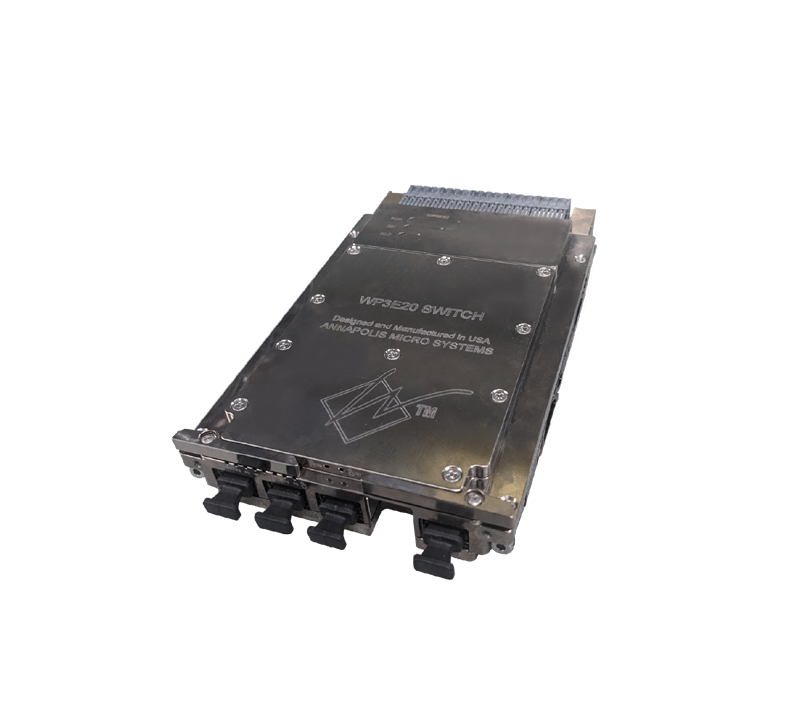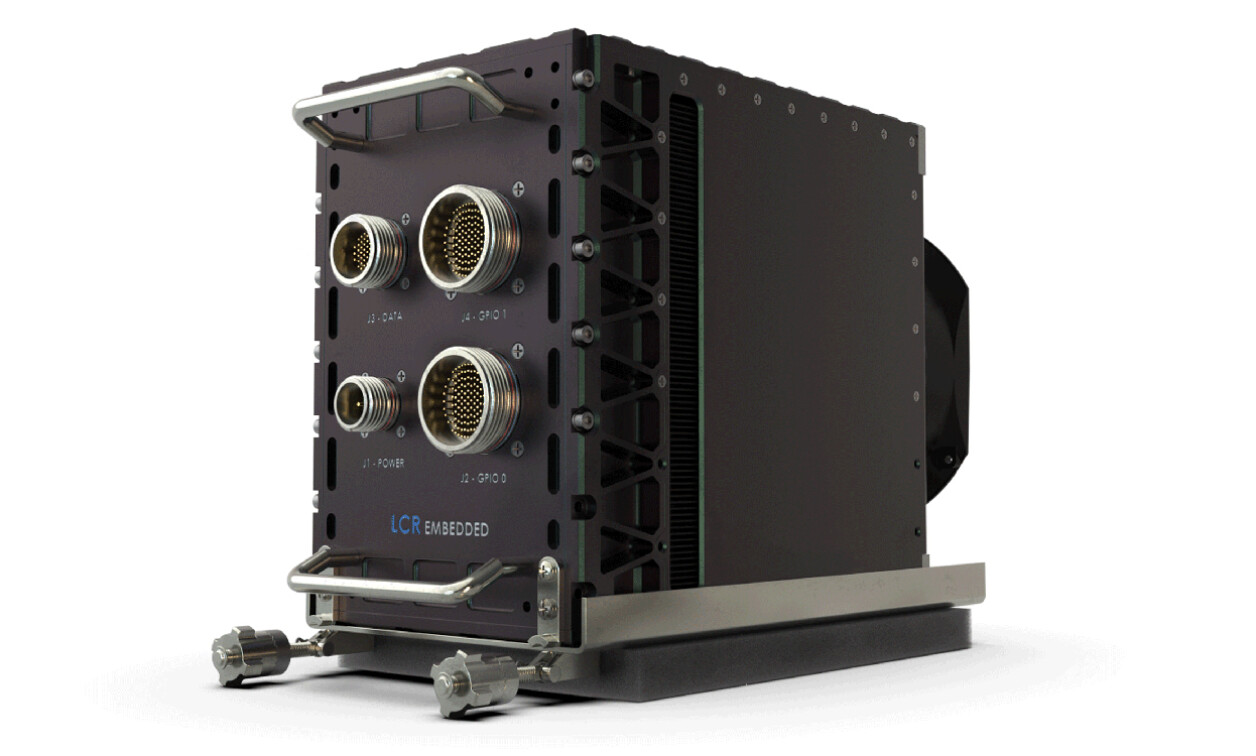Part of the reason for the appeal of 3U VPX in addition to the performance, ruggedness, and SWaP/C advantages, is the high degree of openness of VPX backplanes. System designers have what seems like nearly infinite possibilities for I/O and backplane interconnects, allowing the architecture to fit within an astonishing array of applications in terms of quantity of I/O, speed and signal integrity, flexibility, and the physical path taken by the I/O (copper, Radio-Frequency (RF), fiber optics, etc.).
However, these infinite possibilities create infinite choices and decisions, during both the design and upgrade processes. No two customers want the same I/O from their systems, and small changes at the board level can translate into significant backplane and I/O design changes later on in the design process. In addition to this, upgrades become equally fraught as the flexibility of the architecture can make it difficult to perform simple “drop-in” upgrades without a major redesign, and the popular ARINC 404 chassis form factor severely limits the card cage orientation and backplane access.
Options to manage the flexibility
Balancing the I/O possibilities often causes a designer to settle on one of the following options as part of their design process, depending on which of the factors is the most important to the customer:
- An all-in-one-piece backplane and I/O board connected to one another by means of a monolithic flex assembly;
- Discrete backplane and I/O board connected to one another by means of a discrete flex assembly;
- Separate backplane and I/O board connected by means of backplane cables;
- Separate backplane and I/O board connected by means of a transition board;
- Rear Transition Module (RTM) options, which are problematic within a space-constrained ARINC 404-style enclosure: a. Accessing I/O by means of individual Rear Transition Modules (RTMs); and b. Connecting the I/O board to the cards by means of VPX RTM cables.
Each of these options comes with its advantages and disadvantages. Many users in fact prefer to choose a combination solution. However, these are overall the dominant means by which I/O is often pulled from a 3U VPX enclosure, and each one is treated separately in more detail below.
Monolithic backplane/flex
In this option (Figure 1), the backplane and I/O board are effectively one unit, connected by a flex segment and manufactured as one assembly. Advantages of this option include exceptional signal density and integrity due to the absence of any interconnects and decreasing costs per unit as the volume of units increases, although it can be costly in low volumes. This is due to the entire assembly once designed can be manufactured mechanically in a way that does not require manual labor, the cost for which of course scales roughly linearly as volumes increase.
However, a monolithic backplane/flex assembly is also usually expensive and requires specialized design and manufacturing capabilities. Since it consists of one monolithic piece, it is also an inflexible solution and potentially requires complete redevelopment and replacement when any part of the system is upgraded.
Discrete backplane/flex
Since this option (Figure 2) isolates the backplane and the I/O board from one another by means of a flex interconnects, it offers a reduction in signal integrity, but with the benefit of a reduction in cost and a slight increase in flexibility, since an upgrade would only require a redesign of the affected boards. It also offers similar scaling in cost of assembly manufacture as volumes increase, but still requires specialized design and manufacturing capabilities.
Backplane-I/O connections via cabling
This option (Figure 3) offers excellent flexibility. It is inexpensive, and upgrades will often require only cable replacement or even simply a re-spinning of the I/O.
However, it can be very difficult to match the signal integrity or density of the flex-related options, and the manual labor required is susceptible to human error and causes costs to increase proportionally as production volumes increase. This option can also require shielding and consume valuable enclosure space.
Backplane-to-I/O transition board
Connecting the backplane and I/O board by means of a transition board is one of the options that offers the greatest balance between flexibility and signal integrity, and is implemented frequently (Figure 4). The transition board can support excellent signal integrity, and while it can be expensive in low volumes, assembly costs do not scale as quickly since there is limited manual labor required for assembly.
Perhaps most significantly, the hard mount between the backplane and the I/O board offers excellent ruggedness in addition to the option to include supporting circuitry for functions like filtering, circuit protection, or processing. Tight tolerances are often required.
Accessing I/O via rear transition modules
While this option (Figure 5) offers good signal integrity and flexibility along with the option to add supporting circuitry, the requirements for an RTM card cage can make this an expensive and challenging option to implement, especially in space-constrained enclosures such as Air Transport Racks, which do not offer RTM access.
Accessing I/O via VPX RTM cables
In terms of flexibility, this option (Figure 6) is by far the best, allowing the designer to extract signal from any individual pin on the backplane. However, due to this exceptional flexibility, this option is expensive and usually involves extremely long lead times. The number of cables can also impact signal integrity and offer challenges in cable management in rugged or space-constrained enclosures. As with the previous option, it is often not an option in ATR-style enclosures due to the lack of RTM access.
How to strike a balance: Weighing your choices
Clearly, the best option for a given environment or application will depend on many things, including cost, schedule, production volumes, the need for signal integrity, and crucially, accurate prediction of the system’s most likely upgrade paths so that the customer can be left with the best choices in the future for a given design.
However, there are certain general guidelines that can be used to pick a path through the possible choices. If signal integrity is a concern, the best design may be one that minimizes connection points, as each interconnect degrades the signal. Hard-mounted products are usually more rugged, but require tight tolerances.
Lastly, the relative costs of flex assemblies versus cabling to connect backplanes and I/O boards scale differently with production volumes. Flex assemblies are more expensive in low volumes, but require no manual labor and hence their cost per unit goes down with larger volumes. They are also less error-prone than cable assemblies, which require more manual labor. And while they offer better signal performance, they are also far less flexible when upgrades are required.
Occasionally custom solutions that combine the discussed options are required – implementing a backplane-to-I/O transition board with cabling to individual blades, or implementing a discrete backplane/flex assembly supplemented by backplane cables. (Figure 7 and 8).
In summary, while the I/O options of the popular VPX form factor can be intimidating, we’ve found that the best designs usually fall within one of the above six options, with some room for further customization, and that a careful consideration of the most important factors to the environment and application can provide excellent guidance for anyone trying to pick an optimal path through the present and future of their VPX implementation.







